The Type 60 Self-propelled 106 mm Recoilless Gun, also called Type 60 SPAT, was a self-propelled twin antitank rifle carrier developed by Komatsu on a relatively similar base to the Type 60 APC, introduced the same year, with 252 built until 1977, and in service with the JGSDF until 2008. It was still listed in the inventory but is now either in depots or scrapped.
The Type 60 SPAT was designed to ambush enemy tanks underway as much as provided mobile defensive capabilities in the case of a Japanes invasion by Soviet forces. Its chassis gave it a low profile, and in many ways it recalled the US M50 Ontos, but with a lower profile.
Thus, the procurement office contracted for prototypes from Komatsu, delivered as the SS1, and Mitsubishi Heavy Industries, as the SS2. Both would be powered by the same 110 hp six-cylinder diesel engine and would be able to operate two 105-millimeter (4.1 in) M40 recoilless rifles. They were delivered quickly, in 1956. The second was based on its own Type 60 APC chassis. Tests started early 1957 and were concluded by December 1958.
A second series of prototypes was ordered to test a 4 recoilless rifles configuration, but but the US provided the new and highly effective, but heavier M40, which forced the reversion to two. A third series (SS4) was built by Komatsu as SS4 with a more powerful engine, new transmission, new clutch and two-speed auxiliary transmission. On trials, between May 1959 and March 1960, they were found the best and thus accepted for production and into service by September 1960 leading to an order for 250. The Model A was later replaced by a Model B (see below).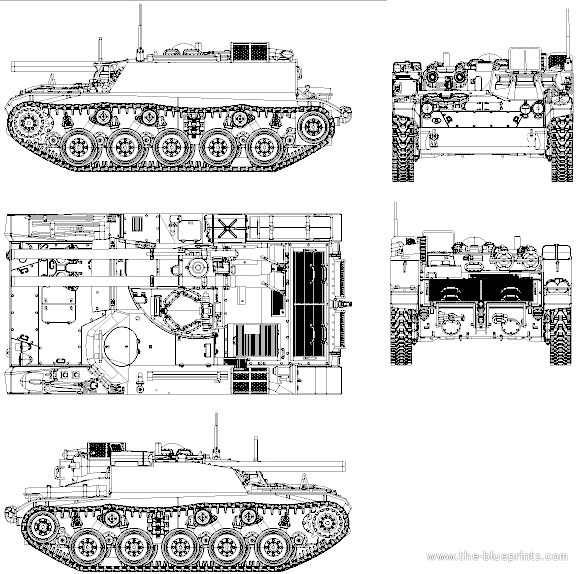
The commander was seated to the middle, left of the two recoiless rifles, his position attached to the hydraulic lifting mounting so to remain at its height when elevated before firing. He was given a single domed hatch cover opening rearwards, and it had acces to a day periscopic sight froward of it and extra vision block to his rear.
-The loader is seated to the left of the commander in the hull, and had its own left-opening hatch (single-piece) and retractable day periscope to the rear. Main task was to reload the recoilless rifles, dismounting and climbing on top of the engine deck or behind, an dangerous position to be in and main limitation of the design.
The driver sat the left side forward, having a single-piece hatch cover rear-opened and with three day periscopes.Evolution/Variants
The JSDGF nomenclature in 2000
Development
By 1953, the Japan Ground Self-Defense Force (JGSDF) received many US-supplied 105-millimeter (4.1 in) recoilless rifles to assist its anti-tank capabilities. The JSDGF general staff approached various manufacturers in order to see if a self-propelled variant coulld be produced, as it tactically made sense, providing an organic anti-tank capabilities to APC regiments of motorized infantry, well before the IFV was even a concept.The Type 60 SPAT was designed to ambush enemy tanks underway as much as provided mobile defensive capabilities in the case of a Japanes invasion by Soviet forces. Its chassis gave it a low profile, and in many ways it recalled the US M50 Ontos, but with a lower profile.
Thus, the procurement office contracted for prototypes from Komatsu, delivered as the SS1, and Mitsubishi Heavy Industries, as the SS2. Both would be powered by the same 110 hp six-cylinder diesel engine and would be able to operate two 105-millimeter (4.1 in) M40 recoilless rifles. They were delivered quickly, in 1956. The second was based on its own Type 60 APC chassis. Tests started early 1957 and were concluded by December 1958.
A second series of prototypes was ordered to test a 4 recoilless rifles configuration, but but the US provided the new and highly effective, but heavier M40, which forced the reversion to two. A third series (SS4) was built by Komatsu as SS4 with a more powerful engine, new transmission, new clutch and two-speed auxiliary transmission. On trials, between May 1959 and March 1960, they were found the best and thus accepted for production and into service by September 1960 leading to an order for 250. The Model A was later replaced by a Model B (see below).
Design

Hull and General Layout
The Type 60 is a low, compact vehicle. Layout:The commander was seated to the middle, left of the two recoiless rifles, his position attached to the hydraulic lifting mounting so to remain at its height when elevated before firing. He was given a single domed hatch cover opening rearwards, and it had acces to a day periscopic sight froward of it and extra vision block to his rear.
-The loader is seated to the left of the commander in the hull, and had its own left-opening hatch (single-piece) and retractable day periscope to the rear. Main task was to reload the recoilless rifles, dismounting and climbing on top of the engine deck or behind, an dangerous position to be in and main limitation of the design.
The driver sat the left side forward, having a single-piece hatch cover rear-opened and with three day periscopes.
Evolution/Variants
Production was at an average yearly rate from 10 to 20 vehicles until December 1977.
Type 60ABase model, 1960.
Type 60B (1967)Strengthened Model A.
Type 60B (1974)Komatsu SA4D105 4-cyl. WC diesel (150 hp@2,800 rpm)
Power Unit and Performances
The production model had a modified commercial air-cooled Komatsu 120 hp diesel diesel engine, new transmission 4+1 2-speed auxiliary transmission and wet multidisc hydraulical clutch. Ground pressure was 0.67 kg/sm2, Ground clearance 35 cm, with a Track 1,97 meters wide, links 26 cm wide, and 2,3 m in ground contact.
Top speed was not steallar at just 45 kph, and thanks to a fuel capacity of 140 liters it could reach 250 km. Not amphibious, it was able to ford 70 cm of water, climb a 60£ gradient, negociate a 30% side slope, climb a 30 cm vertical step and gap a 1.80 m wide trench. Starting in 1974, a 150 hp Komatsu SA4D105 air-cooled, 4-cylinder diesel engine was fitted.
Protection, passive and active
The main hull was made of welded and riveted steel armour, protecting from small arms fire and shell splinters. It is generally assimilated to 12 mm or 0.47 inches and that thickness was magnified forward by the sloped armour. Other than that, the vehicle had no laser warning system nor even smoke dischargers. It was a simple, rudimentary vehicle that counter on its mobility and low profile to survive.
Armament: M40 Recoiless Rifles
The M40 derived from the earlier M27 recoilless rifle, also a 105-mm weapon fielded in the Korean War. The concept dated back the Second World War, but it was rushed in service, resulting in reliability issue due to trunnions mounted too far to the rear. It was also considered too heavy and lacked range accuracy due the absence of a spotting rifle. The Army developed the M40 as a 106-mm recoilless rifle, in 1955 which can be fired from a lowered position, but with a 20° traverse and +10°/-5° elevation, which mechanism was manually operated for 30° either side.
Shared by the M50 Ontos and also mounted on jeeps, this ordnance weighted 209.5 kg (462 lb) for a lenght of 3.404 m (11 ft 2 in), and firing a 105×607mmR HEAT, HEP, HEAP, Canister shell at 503 m/s (1,650 ft/s) with the M344 HEAT for an effective range of 1,350 m (1,480 yd) and indirect range of 6,870 m. Eight rounds of HEAT or HE ammunition were stored and there was a 75 cm stereo range-finder and on the Model B, a night sight mounted on the left 106 mm recoilless rifle. However in the 1990s these vehicles were recoignised as obsolete as unable to defeat the composite/ERA armour of modern MBTs.
Type 60ABase model, 1960.
Type 60B (1967)Strengthened Model A.
Type 60B (1974)Komatsu SA4D105 4-cyl. WC diesel (150 hp@2,800 rpm)
Power Unit and Performances
The production model had a modified commercial air-cooled Komatsu 120 hp diesel diesel engine, new transmission 4+1 2-speed auxiliary transmission and wet multidisc hydraulical clutch. Ground pressure was 0.67 kg/sm2, Ground clearance 35 cm, with a Track 1,97 meters wide, links 26 cm wide, and 2,3 m in ground contact. Top speed was not steallar at just 45 kph, and thanks to a fuel capacity of 140 liters it could reach 250 km. Not amphibious, it was able to ford 70 cm of water, climb a 60£ gradient, negociate a 30% side slope, climb a 30 cm vertical step and gap a 1.80 m wide trench. Starting in 1974, a 150 hp Komatsu SA4D105 air-cooled, 4-cylinder diesel engine was fitted.Protection, passive and active
The main hull was made of welded and riveted steel armour, protecting from small arms fire and shell splinters. It is generally assimilated to 12 mm or 0.47 inches and that thickness was magnified forward by the sloped armour. Other than that, the vehicle had no laser warning system nor even smoke dischargers. It was a simple, rudimentary vehicle that counter on its mobility and low profile to survive.Armament: M40 Recoiless Rifles
The M40 derived from the earlier M27 recoilless rifle, also a 105-mm weapon fielded in the Korean War. The concept dated back the Second World War, but it was rushed in service, resulting in reliability issue due to trunnions mounted too far to the rear. It was also considered too heavy and lacked range accuracy due the absence of a spotting rifle. The Army developed the M40 as a 106-mm recoilless rifle, in 1955 which can be fired from a lowered position, but with a 20° traverse and +10°/-5° elevation, which mechanism was manually operated for 30° either side.Shared by the M50 Ontos and also mounted on jeeps, this ordnance weighted 209.5 kg (462 lb) for a lenght of 3.404 m (11 ft 2 in), and firing a 105×607mmR HEAT, HEP, HEAP, Canister shell at 503 m/s (1,650 ft/s) with the M344 HEAT for an effective range of 1,350 m (1,480 yd) and indirect range of 6,870 m. Eight rounds of HEAT or HE ammunition were stored and there was a 75 cm stereo range-finder and on the Model B, a night sight mounted on the left 106 mm recoilless rifle. However in the 1990s these vehicles were recoignised as obsolete as unable to defeat the composite/ERA armour of modern MBTs.
Type 60 SPAT specifications | |
| Dimensions | 4.3 x 2.23 x 1.38m (14 ft 1 in, 7 ft 4 in, 4 ft 6 in) |
| Total weight, battle ready | 8,000 kg (18,000 lb) |
| Crew | 3: Driver, Cdr/gunner, loader |
| Propulsion | Komatsu 6T 120-2 air-cooled, 6-cyl. diesel 150 hp (110 kW) |
| Suspension | Torsion Bars |
| Speed (road) | 55 km/h (34 mph) |
| Range | 140 L (37 U.S. gal), 250 km (160 mi) |
| Armament | 2x M40 105 mm RR, 0.5 in cal. spotting rifle |
| Armor | 12 mm (0.5 in) steel |
| Total production | 252 |
The Type 60 SPAT in service
The vehicle entered service in September 1960, and it was distributed among garrisons such as Camp Shibata (Niigata pref.), Camp Sinodayama (Osaka pref.) or Camp Moriyama (Aichi pref.) among others. They took part in yealy exercises and weapons trials on Japan's main testing range, but were never deployed outside of Japan, nor exported. After 30 years of service the concept was made obsolete by the newly arrived infantry fighting vehicles. So yearly from the 1990s, a number of Type 60 were withdrawn from service and by 1999 about 160 remained in frontline service. In 2001 Japan also reported to the UN Office for Disarmament Affairs that 140 were in service. By 2007 about 100 were, and the vehicle is now completely retired without direct replacement, its main armament made obsolete anyway by longer-rang and more capable anti-tank guided weapon systems.Links
The JSDGF nomenclature in 2000
Gallery
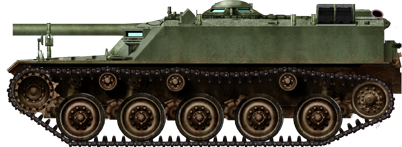
Plain green vehicle, 30th Inf.Rgt; Camp Shibata Niigata, 1960s
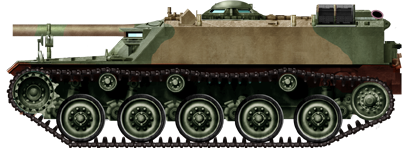
Type 60 SPRG, 37th inf. Rgt. Camp Sinodayama, Osaka, 1970s
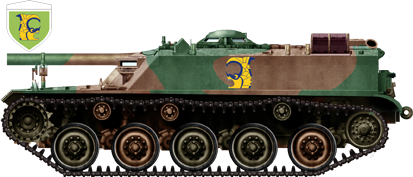
Type 60 SPRG, 35th inf. Rgt. Camp Moriyama, Aichi, 1985
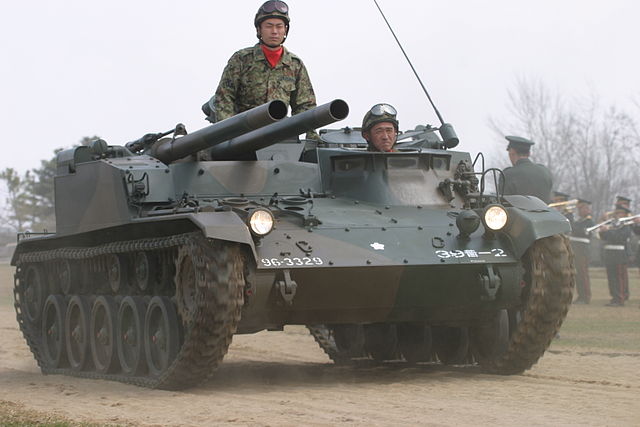
JGSDF Type60_RR SP
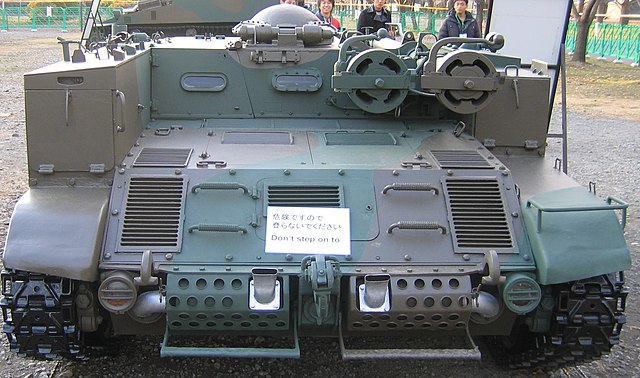
Type 60 SPRG rear
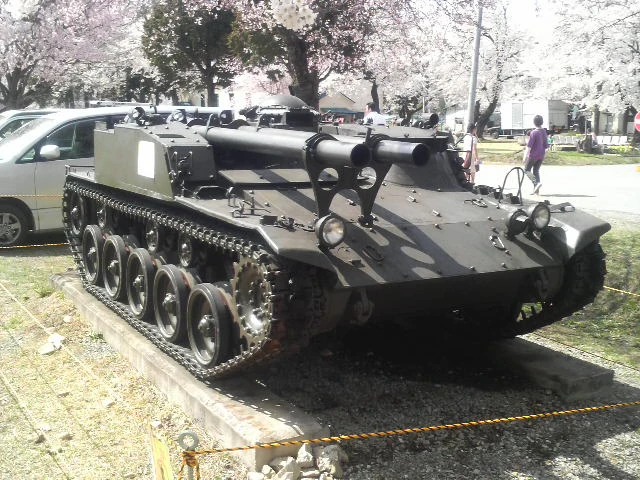
Type 60 SP img1
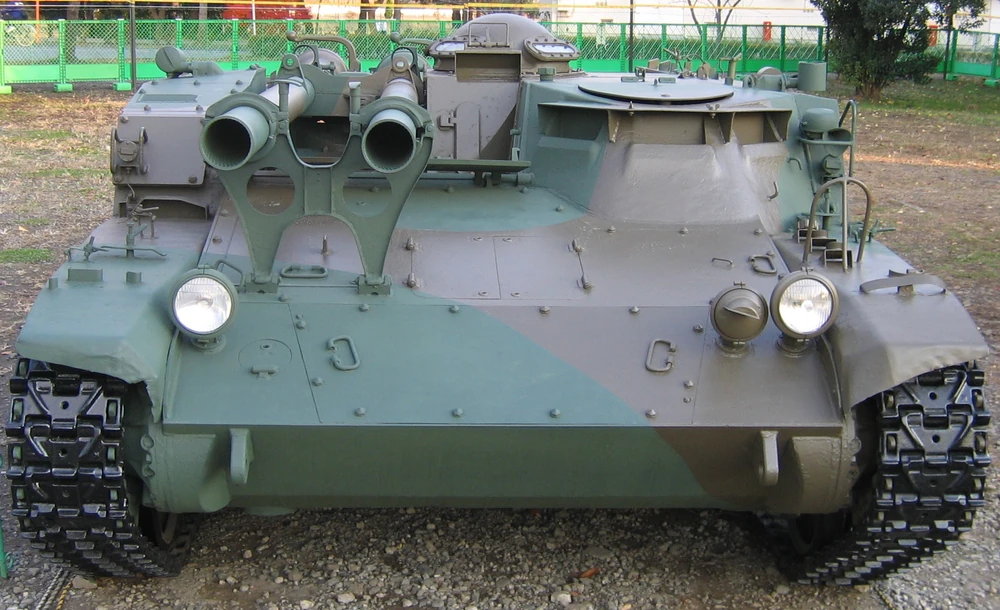
Type 60 SP img2
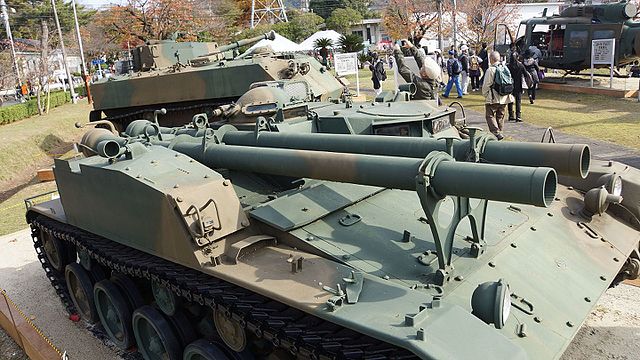
JGSDF Type 60 M40 106mm camp Uji exhibit 2016

same

same
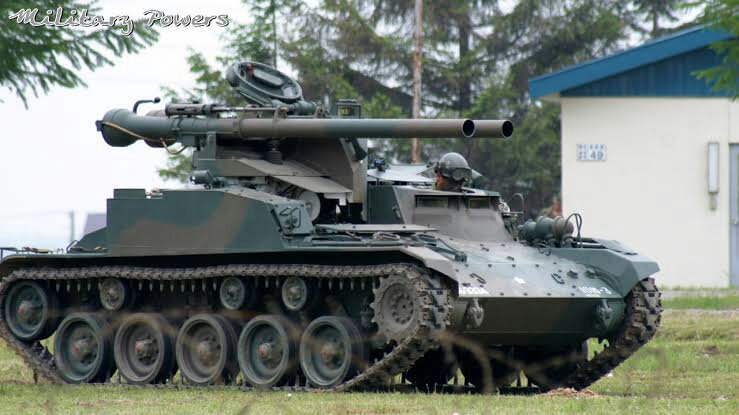
Closeup guns up

Tamiya 1:32 kit, see also

Cold War Tanks


































Cold war tanks posters

Cold War Main Battle Tanks

Cold War Soviet Army
Museums, Movies, Books & Games
The Tanks and Armor in pop culture
Tanks and armored vehicles in general are only really grasped when seen first person: The mass, the scale, it's all there. Explore also the way tanks were covered in the movie industry, in books and in video games.Movies:
Best tanks movie on warhistoryonline.com
On imdb.com
On bestsimilar.com/
miltours.com
liveabout.com/
watchmojo.com
Video Games:
pcgamesn.com
historyhit.com
levvvel.com
vg247.com/best-tank-games
mmobomb.com/
alienwarearena.com

